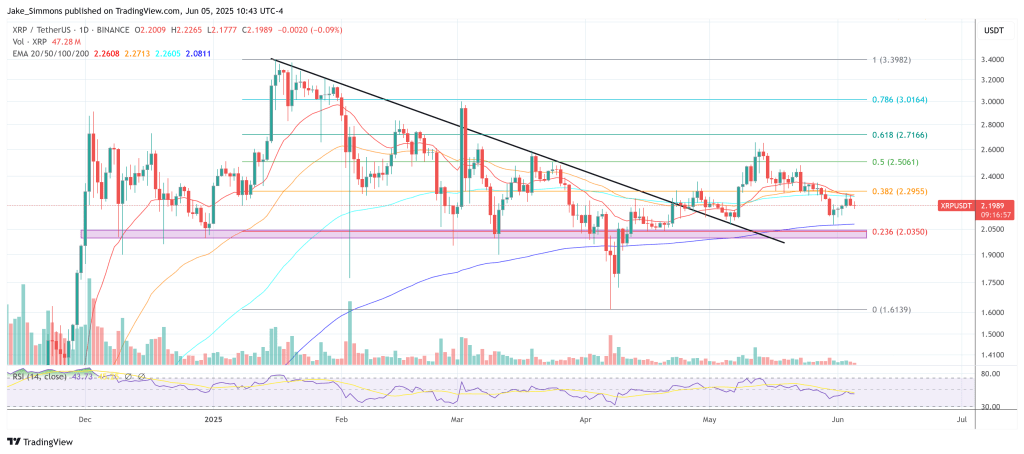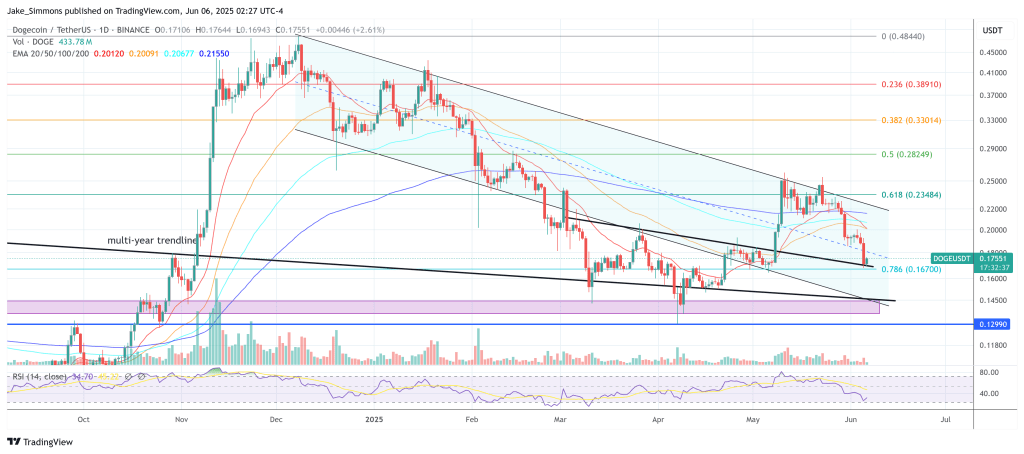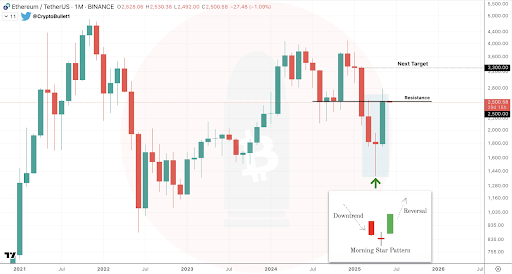Ripple May Be Releasing XRP Liquidity Via Backdoor, Claims Crypto Pundit


A provocative claim by crypto researcher “Darkhorse” has reignited debate over whether Ripple Labs is quietly sidestepping a federal court injunction through a newly disclosed $300 million XRP treasury vehicle involving Asia-based mobility firm Webus International Ltd.
“This new treasury setup allows @Ripple to bypass the injunction legally and cleanly,” Darkhorse declared in a post on X dated June 4. He contends that Ripple has found “the only route left by the Judge” by using an institutional structure that moves XRP through regulated intermediaries instead of selling it directly to investors. “It’s not just clever,” he wrote. “It’s compliant by design.”
The setup in question was revealed in a recent Form 6-K filing by Webus, which outlined the creation of an XRP Treasury to be managed by Samara Alpha, an SEC-registered investment adviser. The program delegates full control of up to $300 million in XRP to Samara under a phased, regulated structure. While the filing stops short of stating where the XRP will come from, Darkhorse argues the intent is clear: Ripple can legally sell XRP to an SEC-facing intermediary like Samara, which then allocates it to a corporate client like Webus — all without violating the standing injunction .
“Ripple is enjoined from direct institutional sales without SEC clearance,” Darkhorse explained. “The workaround? Sell to regulated intermediaries (like Samara on behalf of Webus) with treasury agreements that are SEC-transparent and non-retail facing. It’s structured — not casual.”
Is Ripple Bypassing The XRP Injunction?
Veteran XRP commentator Jay Nisbett pushed back. “I just don’t see any of this as clever or bypassing anything — it’s just adoption,” he replied. Nisbett asserted that Ripple and Webus are not partners, that Webus is simply acquiring XRP like any other participant on the secondary market, and that the asset itself “has been ruled to be not a security in this context.” He added that holding XRP on a balance sheet isn’t the same as triggering a securities transaction.
Darkhorse issued a sharp rebuttal. “You’re missing the mechanism,” he told Nisbett, laying out his argument in four parts. First, he emphasized that Webus did not just announce an intent to buy on the open market. “Webus filed via Form 6-K to publicly document a $300M XRP Treasury but not to simply buy on open markets. They delegated management to ‘Samara Alpha,’ an SEC-registered investment adviser, under a phased, regulated structure.”
Second, he argued that the core issue is Ripple’s inability to sell directly to institutions, which is where the intermediary comes in. “This structure is about creating compliant distance,” he wrote. “It’s not Ripple handing XRP to an investor — it’s routing via an SEC-registered manager who takes custody and executes under regulatory supervision.”
Third, Darkhorse disputed Nisbett’s assertion that there’s no relationship between Ripple and Webus. “Check RippleNet corridors and prior Asia-Pacific mobility pilot cases,” he wrote. “Their ties to Ripple’s network and XRPL liquidity routes go back years. Just because it wasn’t front-page news doesn’t mean it didn’t happen.”
Finally, he challenged the notion that Webus’s XRP holdings are merely passive. “ ‘Just holding on balance sheet’ is not automatic exemption,” he argued. “This is treasury deployment, not idle custody. The fact that Webus structured this through a delegated SEC-facing manager says they do consider XRP institutional risk a legal factor.”
He concluded bluntly: “This isn’t Ripple dumping tokens on exchanges. It’s creating institutional conduits that comply while navigating around the injunction bottleneck.”
Despite the detailed structure and SEC-facing components, Nisbett remained unmoved. “No I get what you’re saying… I just disagree in that mechanism being an unexpected event,” he wrote. “It’s just a natural maturation of the market and the market reacting to legislation hurdles as the market always has and will.”
With Ripple still bound by Judge Torres’s 2024 permanent injunction — which prohibits direct institutional XRP sales unless registered — the debate hinges on whether the Webus structure constitutes indirect circumvention or lawful evolution. The SEC has yet to comment, and the court recently denied the parties’ request to vacate the injunction, calling it “procedurally improper.”
At press time, XRP traded at $2.1989.


Bloodbath Incoming? Dogecoin Must Hold This Level To Survive
Dogecoin’s daily time-frame has reached a critical point that leaves virtually no margin for error. ...

Is Ethereum Back In Business? Morningstar Candlestick Pattern Tells A Story
Ethereum has so far underperformed in this market cycle but looks ready to mount a parabolic rally b...

Bitcoin Could Break The Dollar — $250K Prediction Still In Play, Billionaire Says
Tim Draper, a Silicon Valley venture capitalist, has doubled down on his call for Bitcoin to hit $25...

